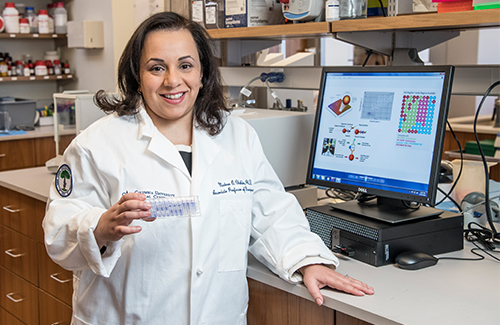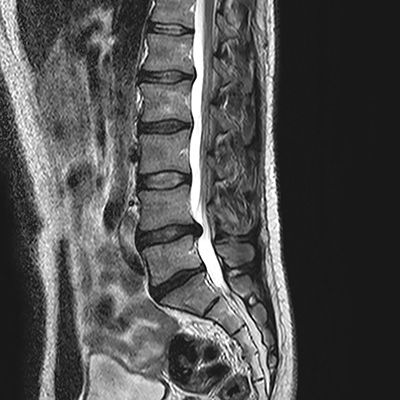Degeneration of intervertebral discs resulting in disc herniation – one of the most prevalent disc pathologies – involves many biochemical factors, including catabolic enzymes that promote remodeling and degradation and pro-inflammatory cytokines that increase the levels and activity of these enzymes.
Studies have shown that herniated disc tissue exhibits an inflammatory cell infiltration, as well as an increase in pro-inflammatory cytokines, which lower the threshold for pain and increase pain sensitivity. However, while disc herniation has been shown to be associated with systemic inflammation, individual patient factors, such as age, body mass index, and gender, may also contribute to inflammatory levels. Yet these factors are not generally considered in studies examining inflammatory cytokine levels in patients with low back pain due to disc disease.
To better understand the influence of inflammation on intervertebral disc cell mechanics, Nadeen O. Chahine, PhD, and her colleagues in the Department of Orthopedic Surgery and Department of Biomedical Engineering at Columbia University in collaboration with physicians from Northwell Health, undertook a study of the relationship between serum cytokine profiles and structural indicators of spine disease with a goal to identify biochemical markers that could determine the molecular origin of pain. Their findings, published in the October 2020 issue of Osteoarthritis and Cartilage, have the potential to guide the development of individually tailored treatment approaches.

Dr. Nadeen Chahine directs a multidisciplinary research lab focused on spinal intervertebral discs, applying tools of bioengineering and biomechanics to understand degeneration and to develop regenerative therapies. She also serves as the Associate Director of the Carroll Laboratories for Orthopedic Surgery at Columbia University Irving Medical Center.
The study involved 135 patients with an average age of 44 years; 60 percent were female and 40 percent male, and focused on:
- Biochemical factors in disc herniation
- Relationship between radiological indicators and biochemical factors
- Effect of pain intensity and symptom duration on biochemical factor levels
- Biochemical factor profiles from pre to post surgical treatment

MRI of the spine showing one herniated disc that is pressing on the spinal cord
The researchers measured circulating cytokines in patients with symptomatic disc herniation compared to a control cohort, accounting for effects of age, BMI, and gender. They also evaluated the relationship between inflammatory profiles and structural indications of disease based on magnetic resonance imaging. Using a measure of spinal canal intrusion, they specifically compared cytokine levels with severity of herniation. In a subgroup analysis, they also looked at cytokine profiles in patients from pre to post surgical treatment to determine if surgery provides an opportunity for normalizing aberrant cytokine profiles.
“Our findings indicate that back pain patients have elevated systemic inflammation in a manner that depends on the diagnosis of the disc pathology and confirms our hypothesis that inflammation is a driving force of the pain associated with spinal degeneration,” says Dr. Chahine.
The study provided evidence that cytokine levels are elevated in the serum of patients with disc herniation and that the patient-specific covariates of age, BMI, and gender are significant contributors to some cytokines. The percent of spinal canal intrusion was also positively correlated with pain. The authors note, “Interestingly, the significant relationships between disc herniation severity and cytokine levels were present in subjects with chronic symptoms, but did not hold for those with acute symptoms.”
This study is the first to show that disc herniation severity is associated with changes in the circulating levels of inflammatory cytokines in patients and identifies three novel molecular mediators of increasing severity.
In a subsequent study, Dr. Chahine and her colleagues investigated the role of Toll-like receptor-4 (TLR4), which has been shown to participate in the inflammatory responses of the nucleus pulposus related to disc degeneration. They hypothesized that by inhibiting TLR4 signalling, inflammation-induced changes to cellular biomechanical properties could be prevented. Their findings indicated that TLR4 signalling participated in nucleus pulposus cell biophysical regulation and may be an important target for mitigating altered cell responses observed in intervertebral disc inflammation and degeneration.



